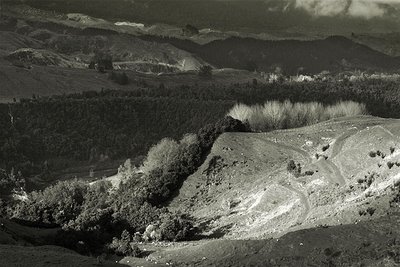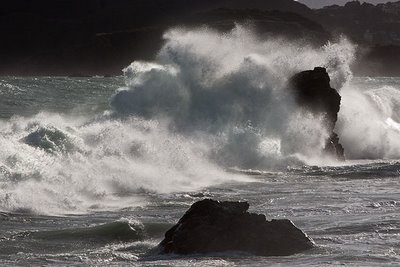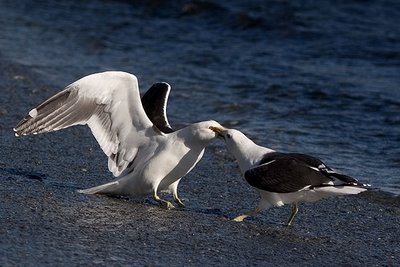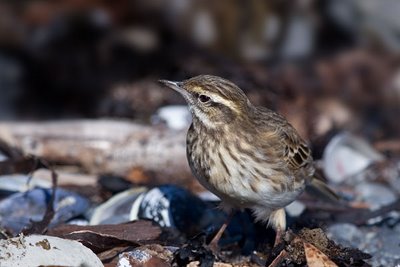Green hills and long shadows; the morning sun cutting across dark gullies, lighting ridgelines and revealing the texture of the land. In the distance, hazy rain, luminous beneath dark cloud, and beyond, a glimpse of snow rising towards the Ngamoko Range. We look across to where the Pohangina turns East and disappears into the Ruahine Range. I feel as if the land's offering me a gift: the chance to show Tony the nature of this place.
beneath dark cloud, and beyond, a glimpse of snow rising towards the Ngamoko Range. We look across to where the Pohangina turns East and disappears into the Ruahine Range. I feel as if the land's offering me a gift: the chance to show Tony the nature of this place.
He's busy with tripods and graduated filters and a camera the size of a campervan. I'm the last person he's visiting during a month of travelling the North Island, meeting friends, photographing, interviewing, exploring places he’s never been, getting snowed in, surviving a succession of southerly storms—but perhaps most of all, coming to understand more about what he does. Why he does it. Why he photographs. You can see it in his photos; you can feel something in them. He tries to explain it, and the phrase “the wairua of the land” comes up several times. It’s difficult to translate. “Wairua” is sometimes synonymised with “spirit”, but that English word has slightly pejorative connotations. Another friend recently pointed out how, as soon as you mention the word “spiritual”, you’re sidelined; you’re grouped with the fringe dwellers—a candle seen as a fire hazard not a means of illumination. At best, decision makers will treat you as another annoyance needing to be accommodated. Besides, “spirit” doesn’t quite seem to do justice to the concept, although I admit to not understanding it well enough to claim any authority.
We detour up Takapari Road, crunching and squelching slowly in four wheel drive up towards the  bushline and the Forest Park boundary. Four other vehicles occupy the road end. A guy and a pre-teen boy with a camo-pattern high-viz beanie wander around. Just looking, I think. The ground’s half covered with slushy snow and the wind’s like steel on a Arctic beach. But the light is simply astonishing; streaming in angled beams from wild cloud, drifting in brilliant patches across dark hill country far below, the river shining, distant arcs of wet road gleaming.
bushline and the Forest Park boundary. Four other vehicles occupy the road end. A guy and a pre-teen boy with a camo-pattern high-viz beanie wander around. Just looking, I think. The ground’s half covered with slushy snow and the wind’s like steel on a Arctic beach. But the light is simply astonishing; streaming in angled beams from wild cloud, drifting in brilliant patches across dark hill country far below, the river shining, distant arcs of wet road gleaming.
Later, Tony tries again to explain what he means by “the wairua of the land”. He mentions how he often senses a kind of melancholy in the land; not grief, more like a gentle and strangely beautiful sadness. I’m sure I know what he’s getting at, and wonder whether he’s come across the term “wabi sabi”. He hasn’t, but when I try to articulate it, I can’t. I stumble over words, I cast about looking for examples or analogies, but they’re elusive. Now, days later, I can suggest that it’s like walking that fine line between joy and loneliness, akin to an existential awareness but without the angst, and lacking the intellectual pretense. But those are just words, and  I suspect the concept of wabi sabi is further confirmation that Heisenberg’s Uncertainty Principle has corollaries far removed from quantum mechanics—in this case, the closer you get to defining wabi sabi, the further you move from its essence. This requires tacit understanding; it’s what I know but can’t say. The closest you can come to hearing it articulated is through a poem. Through haiku. Through the quality of art.
I suspect the concept of wabi sabi is further confirmation that Heisenberg’s Uncertainty Principle has corollaries far removed from quantum mechanics—in this case, the closer you get to defining wabi sabi, the further you move from its essence. This requires tacit understanding; it’s what I know but can’t say. The closest you can come to hearing it articulated is through a poem. Through haiku. Through the quality of art.
And, perhaps especially, through a photograph; one taken by someone open to what the land says, or sings. Someone who not only hears, but listens; not only looks, but sees. Someone, I suspect, not separate from the land.
Photos (click on 1–3 for a larger image):
1. Pohangina Valley, looking towards the Ngamoko Range, from Takapari Road.
2. Pohangina Valley and southern Ruahine Range from Utuwai.
3. Farmland near Utuwai, Pohangina Valley.
4. Rain coming in, Utuwai, Pohangina Valley.

Photos and words © 2006 Pete McGregor











